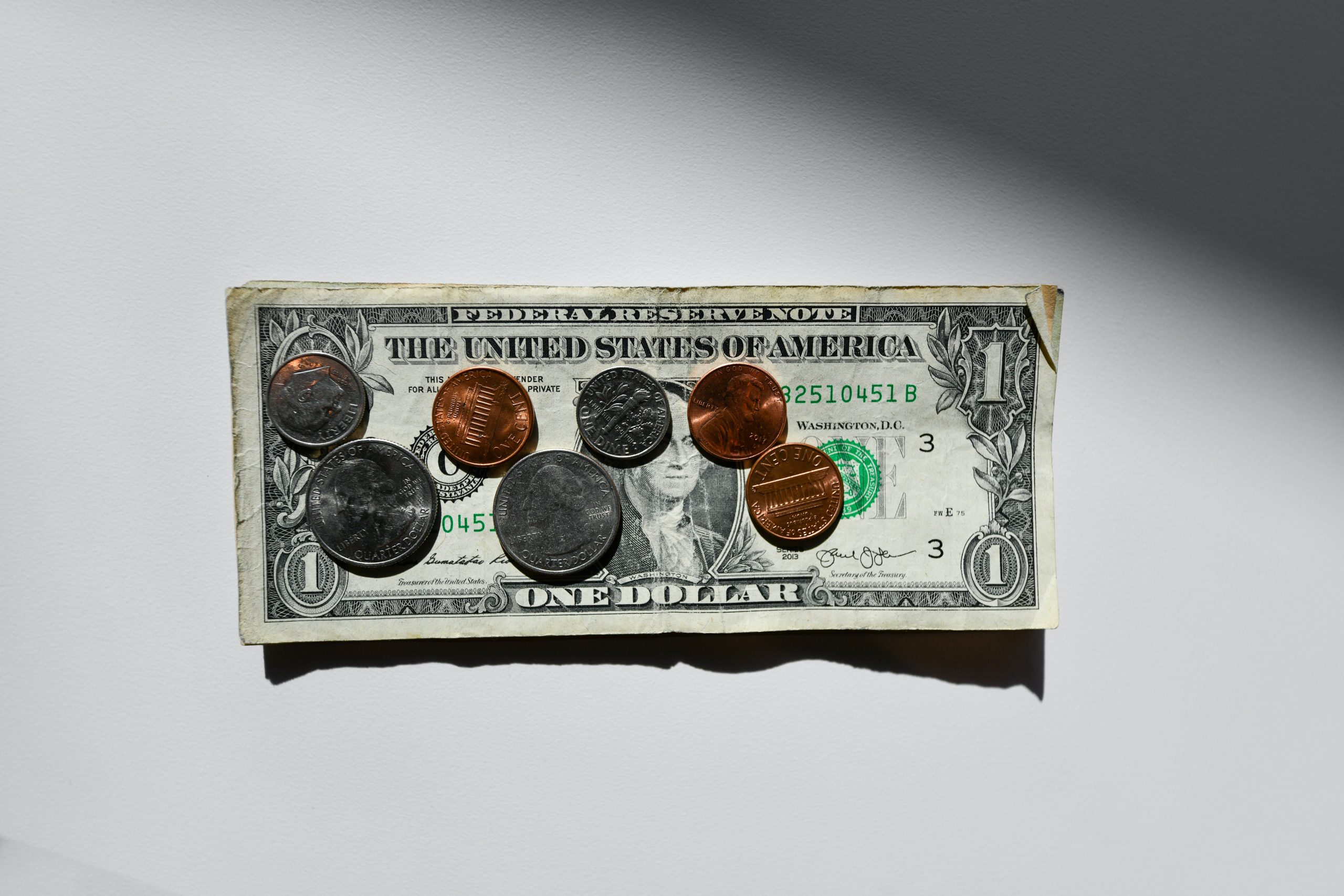A Tipping Guide To Counteract Tipflation And Feel Great Again

Tipping has become increasingly pervasive, leaving many wondering how much to tip without feeling like a miser. To alleviate this dilemma, I’ve crafted a tipping guide to help you navigate gratuities with confidence. This guide not only suggests appropriate tip amounts but also explains the rationale behind them.
In the past, tipping was a discretionary gesture to acknowledge exceptional service. However, today’s tipping culture has morphed into an expectation, regardless of service quality. Moreover, tipping norms have escalated by at least 5% in recent years, compounding the pressure on consumers to tip generously.
I empathize with the challenges of service work. Having once labored at McDonald’s for a meager $4 per hour, sweating over a hot stove while enduring the scrutiny of a demanding manager, I would have welcomed any token of appreciation.
Yet, as consumers, we shouldn’t feel obligated to tip excessively or at every transaction. It’s essential to strike a balance between acknowledging good service and avoiding undue guilt. After all, unhappy customers are detrimental to both consumers and businesses alike.
Tipping Guide Philosophy To Get Over Feeling Bad
A fundamental aspect of my tipping guide is to dispel the notion that refraining from tipping or tipping less doesn’t reflect poorly on your character. The pervasive guilt associated with tipping practices is unwarranted, and I aim to provide two reasons to assuage such feelings.
1) You’re already supporting the business
Even if you’re frugal and opt not to tip, you’re still contributing to the prosperity of the establishment you’re patronizing. By engaging their services or purchasing their products, you’re aiding the business in generating revenue. This should instill a sense of satisfaction in knowing you’re helping sustain their operations.
Consider opting for an Uber ride instead of public transportation. Even without a tip, both the driver and the company receive compensation for the service provided. While tipping is appreciated, it’s not the sole determinant of a business’s profitability or success. Although, as an ex-Uber driver, I do hope you tip something.
Similarly, tipping your waiter, though appreciated, may not have the direct impact you expect. Many restaurants operate on a tip-sharing system, redistributing gratuities among various staff members. Additionally, some establishments include service charges in their bills, alleviating the pressure on patrons to tip.
In a Pew Research report, 72% of Americans oppose automatic service charges. Even with no tip, both the waiter and the restaurant owner would rather have you eating with them than eating elsewhere.
2) You’re enhancing your financial security and your children’s
The money allocated for tipping could instead be directed towards bolstering your financial stability. Particularly if your net worth falls below the average, prioritizing savings and investments over generous tipping can better safeguard your future. Of course, not spending money on such items in the first place would be even more helpful.
For individuals with dependents—such as children, partners, or elderly parents—fostering financial security becomes even more critical. By conserving funds through prudent tipping practices, you’re better equipped to fulfill your obligations and provide for your loved ones. This financial autonomy lessens reliance on external support systems, benefitting both you and society at large.
Three Examples Where It’s OK Not To Tip Or Not Tip As Much
Now that you’re feeling better about not tipping or not tipping as much based on my tipping guide, here are three examples where it’s OK not to tip at all or tip a minimal amount.
1) At a point of sale reader where no service is rendered.
Let’s say you go to the mall and buy a pre-made pastry displayed on the front counter. The clerk uses a tong to place the pastry in a brown bag, punches the cost in the electronic kiosk, and whips it around for your payment.
You see default tip options of 15%, 20%, 25%, or No Tip. Feel free to smash that No Tip button! Unless the clerk lifts your spirits every morning or adds some extra sprinkles, don’t feel bad about not tipping.
Alas, it can be quite uncomfortable to refrain from tipping when the clerk is watching you or your fingers hovering over the tipping option on the kiosk. So, for all you vendors seeking more tips, remember to make eye contact with your customers and flash them a warm smile when they’re about to pay!

2) Picking up a to-go item from a restaurant
One of the trickier tipping scenarios arises when you find yourself waiting at a restaurant for your to-go order to be prepared. As you pass the time, engaging in polite conversation with the maitre-de, clerk, or bartender, you may wonder whether tipping is appropriate when the bill arrives.
In such instances, where no direct service is provided beyond basic interaction, it’s perfectly acceptable to leave the tip box empty and simply pay the total amount indicated on the bill. There’s no obligation to tip for minimal engagement, such as casual conversation or being acknowledged upon arrival.
However, if during your wait, the bartender goes above and beyond by inviting you to sit, offering water, or providing additional service like bread and butter, a small tip may be warranted as a gesture of appreciation. Nonetheless, if you choose not to tip in this scenario, there’s no need to dwell on it, especially if your wait was prolonged due to slow service on the restaurant’s part.
As a customer waiting in the lounge or at the bar for your to-go order, you’re not occupying valuable table space that could otherwise generate revenue for the waiter and the restaurant. Instead, you’re generating additional business.

3) Paying a tradesperson to fix something in your home
Finally, when a tradesperson such as a plumber, electrician, contractor, roofer, or handyman comes to your house to fix something, you don’t have to tip, even though they are providing a service. Such tradespeople often charge a minimum visitation fee and an hourly rate, which can be quite high depending on where you live.
When they provide you with the bill, there is typically no line item for tipping, and it can also be awkward for both parties to exchange cash for a tip. They might also give you an estimate up front, which is all you’ll need to pay.
Of course, if your plumber successfully fixes a long-standing leak that has bothered you for years, feel free to tip as much as you want! Same goes for anything you feel extremely grateful for getting fixed.
A Tipping Guide To Help You Feel Great About Spending Money
My general rule is to tip people who provide a service. The more I appreciate the service, the more I will tip. I have no problem leaving 0% tip to someone who provides poor service, is insulting, or makes me feel like a second-class citizen.
Tipping percentages to consider:
0% – For terrible service that also makes you feel terrible or when no service is rendered
10% – OK service, but below normal standards (long wait, forgot an order, etc.)
15% – Baseline (good service, nothing out of the ordinary)
20% – Great service where the service provider and/or establishment also made you feel good for coming
25% – Outstanding service where the person or establishment went above and beyond (customized a special cake for your birthday, fit you in at the last minute, comped a drink or a dish, etc.)
30%+ – When a favorite establishment has fallen on hard times or has been vandalized or burglarized
$5 – For valet car service at point of pickup. You can certainly tip more if it’s at a fancy event or if the attendant scraped snow off your car. But long gone are the days of only leaving one or two dollars.
If you follow this tipping guide, you will feel much better about spending money and much less guilty if you feel you didn’t tip enough. The tipping percentage that’s easiest to calculate is 10% or 20%.
However, if you simply can’t bring yourself to tip, then consider avoiding establishments or accepting services where tipping is customary. This way, you not only save money on tips, but also on the goods or services themselves.
The Two Best Free Alternatives To Tipping
If you find yourself unable to afford tipping or tipping as much as expected, you can still support the person or business in other ways.
One effective method is to refer the person or business to others. The more people you can direct to the business, the better. Word-of-mouth helps save the business from spending money on advertising and marketing.
Another way to support a business without spending money is to leave a positive review online. Positive reviews can significantly boost a business’s visibility and reputation. Platforms like Yelp, Google Reviews, or TrustPilot are ideal for leaving such reviews.
I’m Always Thankful For Reviews
As a creator who wrote the WSJ bestselling personal finance book, Buy This Not That, I love receiving reviews on Amazon. Every review counts and helps make the book more visible to Amazon customers.
As the host of The Financial Samurai podcast, I receiving reviews on Apple and Spotify are also highly appreciated. Any time a reader or listener leaves a review, I get motivated to write and record more.
I’m also more motivated to respond to questions when help or advice is needed if someone says they’ve left a review of other my book or podcast.
In fact, the easiest way to have a creative respond to you is to tell them you appreciate their work and that you left a review. At the end of the day, every single creative wants most to be read, heard, or seen. Money is almost never the primary driving force.
Tip When You Can, It’s OK When You Can’t
Rewarding great service with a tip is a commendable practice. If you’re able to tip, please do so generously.
However, if finances are tight, don’t feel guilty about not adhering to the customary 15%+ tipping standard. You may only be able to afford 10% or 5% and that’s perfectly acceptable. Simply supporting the establishment with your patronage is appreciated.
Additionally, if you choose to leave no tip, at least you can leave a positive review online. Often times, these reviews are worth much more to the business owner than a regular tip.
In the future, when your financial situation improves, you can always revisit the establishments where you tipped less and make up for it then.
Remember, at the end of the day, it’s your money. You are free to spend it as you see fit.
Reader Questions And Suggestions
What’s your take on tipping culture today? Have you observed “tipflation” in the places you frequent? How much are you comfortable tipping? And what do you consider a reasonable minimum tip amount?
If you’re looking for a free app to management your budget and cash flow, check out Empower. I’ve been using Empower since 2012 to track my net worth, minimize my investing expenses, and forecast my retirement needs. There’s not better tool out there.
For more nuanced personal finance content, join 60,000+ others and sign up for the free Financial Samurai newsletter and posts via e-mail. Financial Samurai is one of the largest independently-owned personal finance sites that started in 2009.
A Tipping Guide To Feel Good About Spending Money is a Financial Samurai original post.



